Bringing the classroom outside
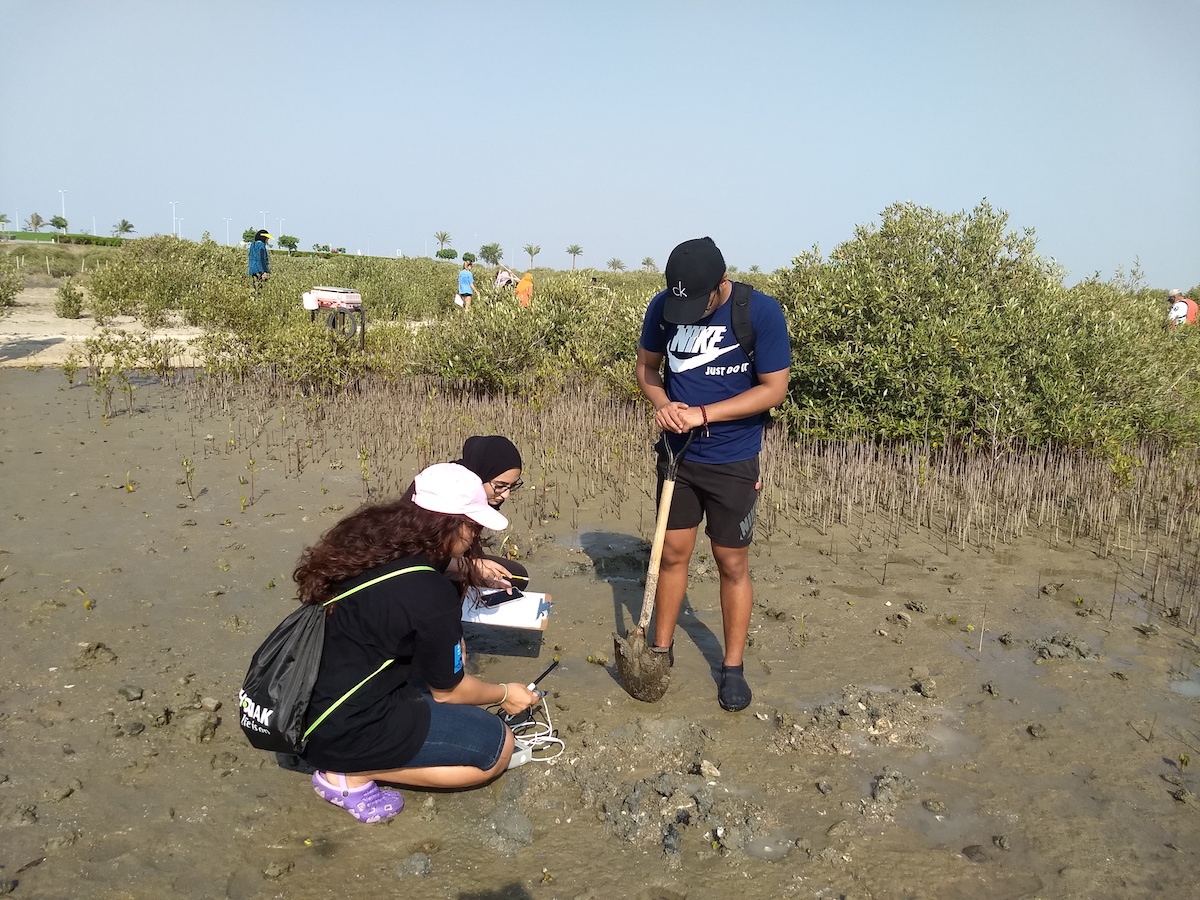
Students from The KAUST School use sensors for measuring oxygen, acidity (pH) and redox potential (oxic/anoxic conditions) in the sediment. Photo courtesy of The KAUST School.
-By Sonia Turosienski, KAUST News
Instead of sitting at their desks as they do most days, the Grade 12 biology class and the Environmental Systems and Societies class from The KAUST School (TKS) piled into a bus that headed to the Ibn Sina Research Station at the King Abdullah Monument on the KAUST campus. Once at the shoreline, Joanne Ellis, a research scientist from the KAUST Red Sea Research Center (RSRC); Marco Fusi, a KAUST postdoctoral researcher; and Timothy Thomson, a RSRC master's degree student, got the class to work in the mangrove forest located there.
The task for the day was to measure the heights of local mangroves, record crab abundances and measure associated changes in the soil properties along a zonation gradient. The seaside outing is an example of the ongoing collaboration between TKS and RSRC researchers. From Grade One to Grade 12, teachers at TKS and researchers at the University work hard to bring real-world research to every level of education.
A passion for science and desire to share this with her children and students inspired Emma Nason, TKS head of science and biology teacher and mother of two children at the school, to reach out to Ellis, whose children also attend the school.
"As a parent, I want to know that my children are being exposed to the very best around, and in this case, it's high-level science. It is an enormous privilege to be able to make the most of the fabulous research and knowledgeable researchers working just down the road," Nason said.
While the TKS students had the chance to learn from top researchers in their respective fields, the learning was not only one way.
"Science needs to be relevant to society. Working with the students is a great way to learn what really captures people's imaginations, what they love, what techniques work and what doesn't," said Ellis. "Children are not confined in their thinking, so they sometimes ask questions that are totally out of the box. It's a wonderful experience."
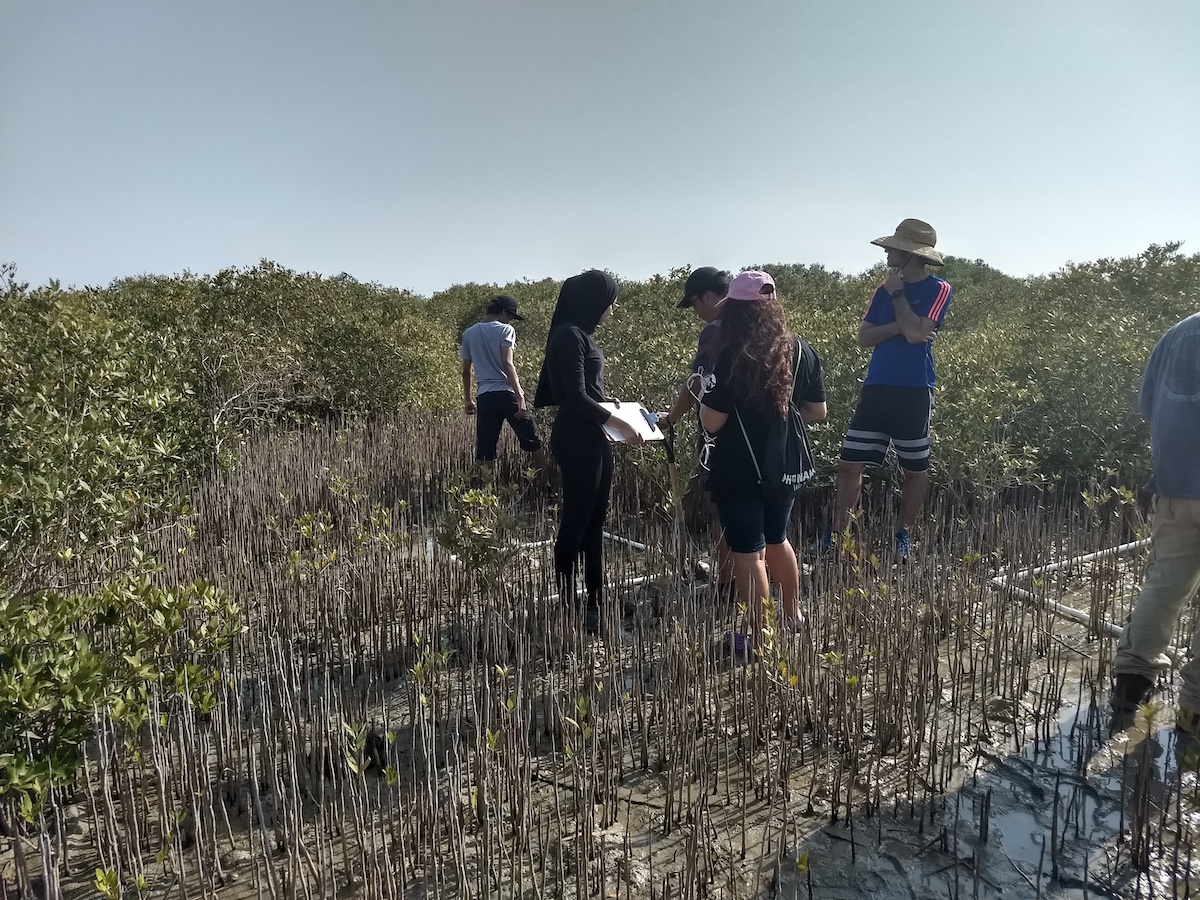
Mangroves are small trees or shrubs that have adapted to survive in coastal saline or brackish water. Photo courtesy of The KAUST School.
"Young minds are exceptionally good at asking questions. To see one student light up with a question or newfound interest for a natural subject is wonderful to see. The hands-on experience is, in my opinion, where the most effective learning takes place," Thomson added.
Getting into the thick of it
Mangroves are small trees or shrubs that have adapted to survive in coastal saline or brackish water. They are commonly found in tropical or subtropical regions, including in Saudi Arabia.
"Mangroves in the Red Sea are unique. They represent one of the main vegetative ecosystems that we see in this desert environment at the interface between the land and ocean. Here the mangroves live in really extreme environments—very hot and very salty. The plants also have to cope with low levels of oxygen in the soil," explained Ellis.
The mangrove forest at KAUST includes larger trees called fringe plants that grow along the seaward edge of the coast. These trees are exposed directly to tides and waves and are generally inundated by seawater all year. Moving closer towards the coastline, the plants are dominated by dwarf trees that are affected by the ebbs and flows of the tidal water, surviving in a harsher, more saline environment that becomes arid in the summer.
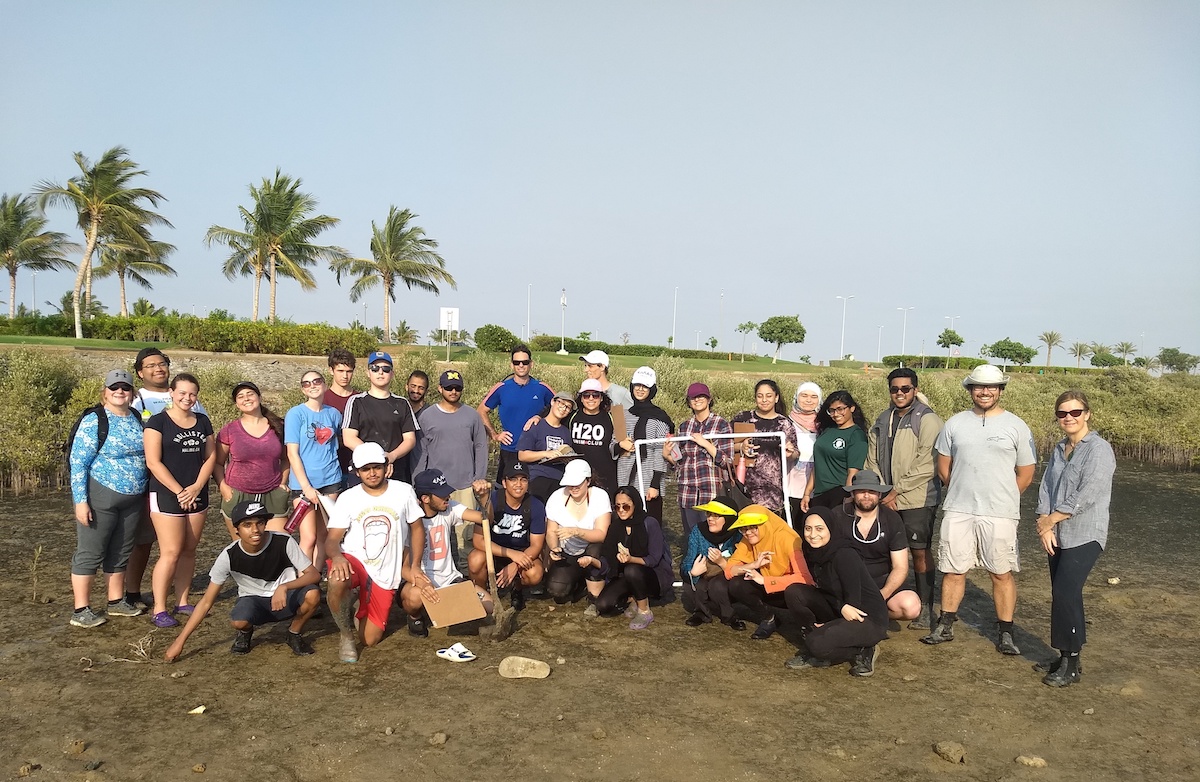
Students from The KAUST School smile after a day working at the KAUST mangrove forest. Photo courtesy of The KAUST School.
The mangroves were also an outdoor classroom for Grade One students.
"We went out and collected mangroves. Then we grew them in the classroom and brought them back to plant in the sea. The kids had a great time getting their hands dirty and splashing around as we planted. It's important to be hands on, especially at that age," Fusi noted.
The KAUST mangroves boast a vibrant population of fiddler crabs. Fiddler crabs can generally be found in the harshest environments, as they have adapted to survive high temperatures (up to 60 degrees Celsius) and high salinity in order to avoid predation.
"In Saudi Arabia, the Cranuca inversa, or violin crab, is the most resistant of the fiddler crab species," Fusi said.
Mangroves on the KAUST campus have a large population of crabs. Photo courtesy of The KAUST School.
The collaborative effort between researchers and teachers enabled the students to learn how to conduct ecological field experiments and demonstrated how limiting environmental conditions can affect zonation patterns of associated plant and animal communities.
Diving into learning
On another trip, the Grade 10 cohort worked with a different group of RSRC researchers, including Matt Tietbohl, Ruben Martins da Costa and Noura Zahran as part of an Interdisciplinary Unit (IDU) between Science and English Language and Literature. Students focused on the problem of coral bleaching. They conducted a variety of experiments over several days at the University and got a taste for work as an academic researcher. The activities culminated in a documentary during which students articulated their ideas for biodiversity conservation by implementing persuasive and emotive language.
Laney Rweyemamu, a Grade 10 English language and literature teacher, commented, "Hearing from researchers passionate about their area of study and seeing critical thinking and learning at work means that students are better able to apply their direct classroom learning to what they will experience as they branch out into their future university studies. We are delighted to have such strong and dedicated academic role models for our students."
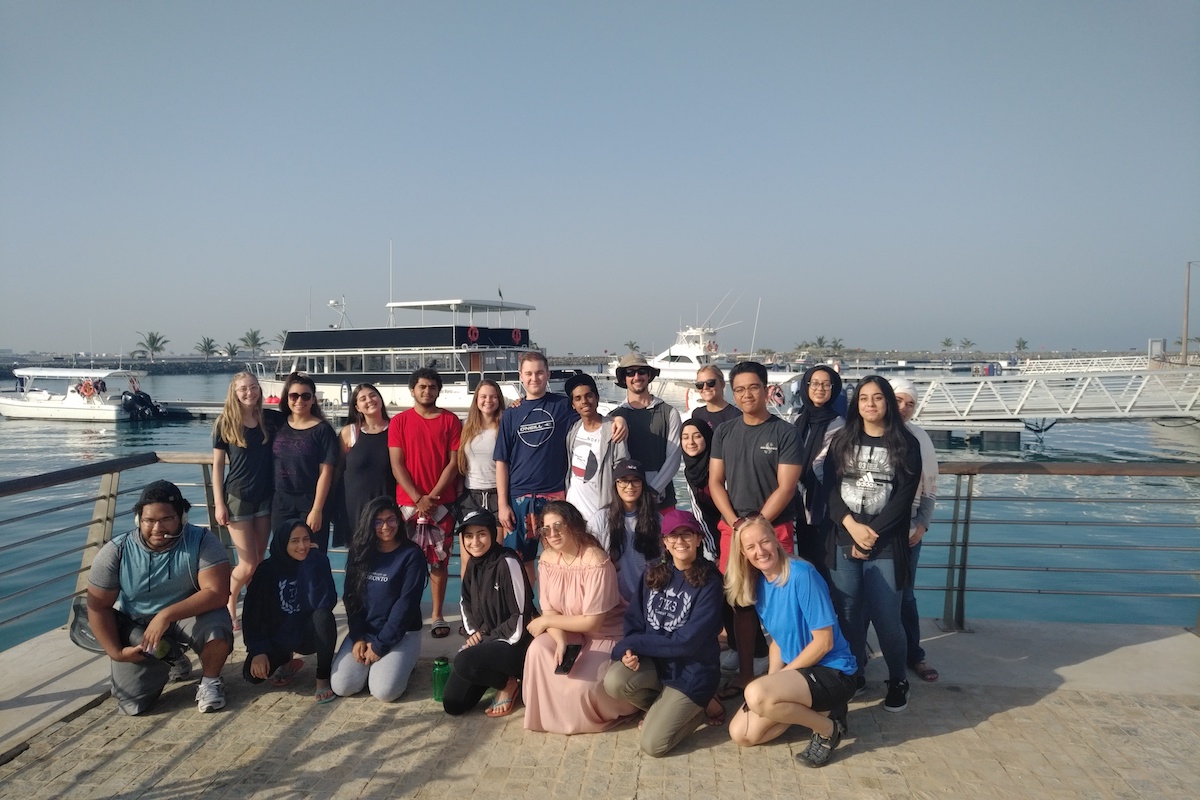
The Grade 12 biology class from The KAUST School are shown here geared up for a day at sea. Photo courtesy of The KAUST School.
"The students had to dive down and lay out their tapes. Then they recorded what they observed, including coral and fish," explained Nason.
A student from The KAUST School dives down to take a closer look at the coral reef below. Photo courtesy of The KAUST School.
The snorkeling trip took place twice, and there are plans to continue the trip this year.
Looking beyond the mangroves
The RSRC has a history of working with TKS to bring marine biology research into the classroom. In addition to the snorkeling and mangrove trips, the center's researchers have regularly given presentations on plastic pollution, fish ecology, sustainable fishing and conservation, among other topics.
Off the back of the success of the recent trips, the TKS teachers and RSRC researchers are hoping to make the mangrove and snorkeling trips a recurring part of the academic curriculum.
"There's an opportunity to bring in other [International Baccalaureate] components for the next mangrove trip. For example, chemistry students might have more of a focus on biogeochemical physical parameters of the mangroves using the sediment probes. There's also an opportunity to incorporate physics in assessing the hydrodynamics of the coastal system and how waves attenuate in mangrove stands. Further, the students collected an excellent data set, so there's an opportunity to embed the statistical analysis of the data within the math curriculum. There are lots of opportunities to expand this field trip and incorporate new ones," stated Ellis.
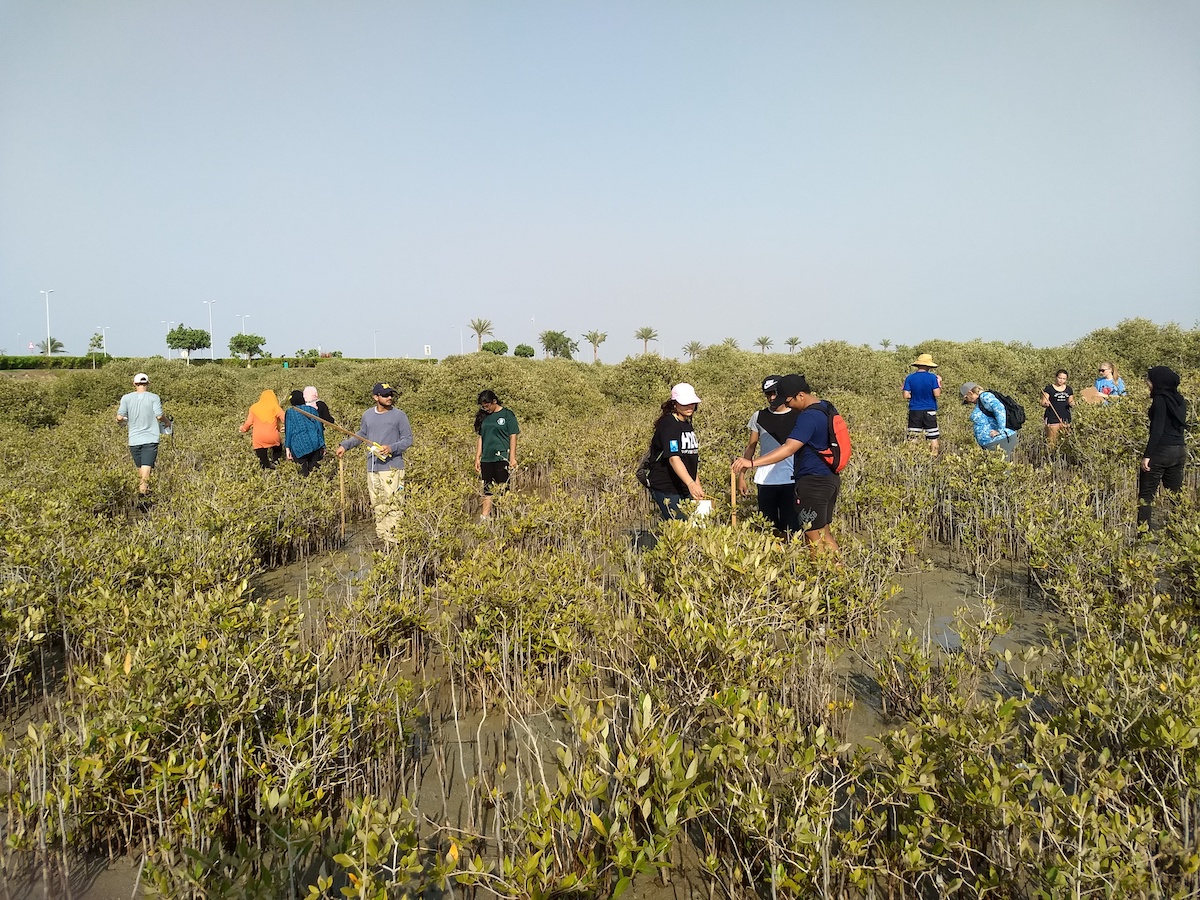
Two students set up a transect of the beach on the KAUST campus to monitor the local crab population. Photo courtesy of The KAUST School.
Related stories:
-
Isotope science and culture: highlights of the 2018 IsoEcol conference
-
Finding Nemo's genes
-
Saving the world's oceans

